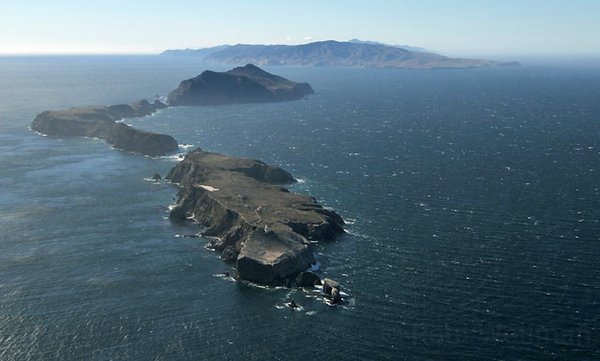Beneath the Rainbow Bridge
An Interview with John Brooks

Beneath the Rainbow Bridge is a documentary that brings a message of preservation forward through history, says director and producer John Brooks. With the help of the Chumash community and the Channel Islands National Marine Sanctuary, this 29-minute nature documentary tells a story of the coast’s cultural and natural history in Southern California. In the film, a Chumash storyteller illustrates the fragility of the natural resources on the Channel Islands and, to a larger degree, on Earth.
Born in Florida, director John Brooks moved westward when he married a Californian and developed an interest in nature documentary filmmaking after college. His education in biology and chemistry gives him a deeper understanding for the documentaries he makes, which include several films about marine sanctuaries. He has worked alongside BBC, National Geographic, and Discovery teams. Currently, he works in the 3-D film industry and hopes to bring that feature to natural history filmmaking.
What was the incentive to make this film, and who is your targeted audience?
The [Channel Islands National Marine Sanctuary] wanted a film for visitors, and people who can’t make it out to the islands, that would give them a better understanding of the cultural and natural history out there. The film explores the unique ecosystems on the islands. It is meant to be seen out of children’s eyes because they’re the generation that will inherit the preservation that we, the friends of the Channel Islands, have sought to protect.
What is the “Rainbow Bridge” referred to in the movie’s title?
According to Chumash mythology, when their people lived on the islands, they began to realize how they were impacting the land. The Rainbow Bridge is a mythological bridge that the Chumash people crossed to reach the mainland when they realized that even their small population was depleting the islands’ fragile resources. The Chumash storyteller in the movie illuminates how the people’s relationship with the islands is a microcosm of our impact on Earth’s resources.
Does the film have an uplifting or a disheartening message?
Definitely an uplifting one. It shows the reality that resources are fragile and finite and there have been significant violations to them. But it also shows that with good science and good preservation, these violations have been minimized and it is still possible to reverse them.
How long did the filming process take and what were some obstacles you faced?
The biggest obstacles in making this film were a small budget and a small crew that couldn’t work full time. That, capturing all the seasons, and as much underwater footage as possible made the filming process a slow one. From start to finish last summer, it took about two and a half years to film.
Is there anything you want to add?
If you watch the credits you’ll notice how many volunteers worked on the film. A lot of this project wouldn’t have been possible without all the volunteers from the sanctuary. I want to give ample recognition to the Chumash community. Not many people realize how involved in this project they were. It was nice to name the documentary after a Chumash story.
4-1-1
Beneath the Rainbow Bridge will be shown on February 4 at 2 p.m. at Metro 4, and on February 5 at 1 p.m. at the Santa Barbara Museum of Art. The schedule is subject to change, so see independent.com/sbiff for updates.



